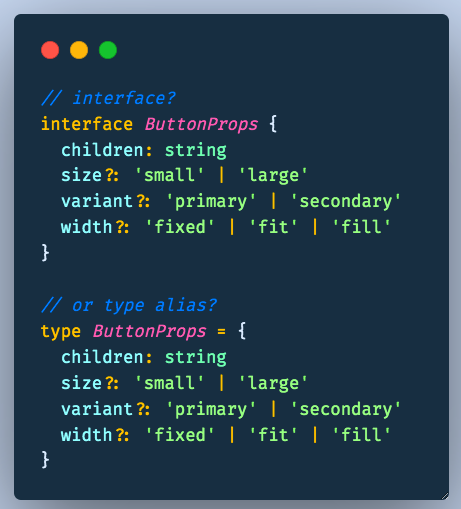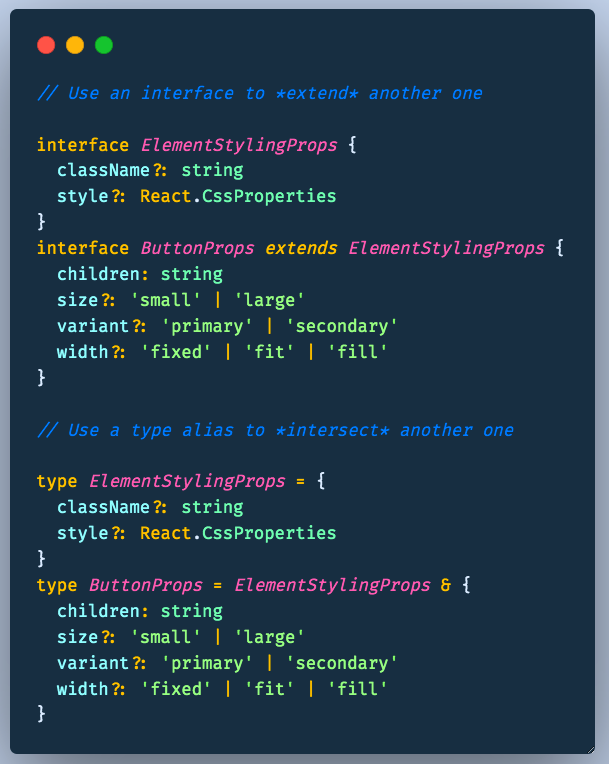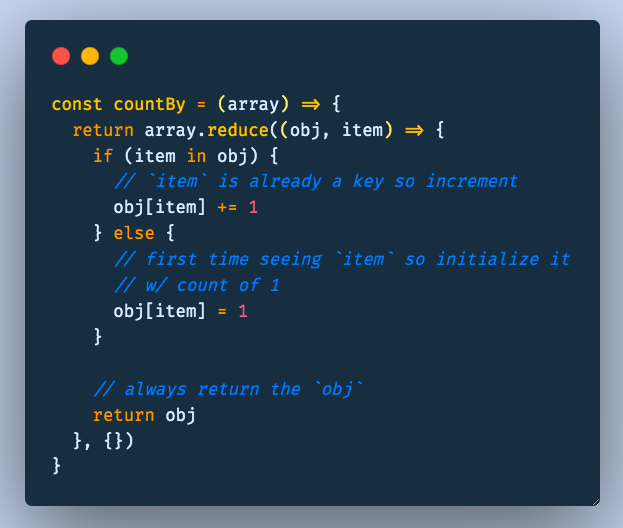
Something that always comes up when I teach React + TypeScript is "interfaces vs type aliases" for props & other object type definitions
95%+* of the time they're interchangeable. But let's look at practical cases where we might favor one over the other 👀
/thread 🧵👇🏾
95%+* of the time they're interchangeable. But let's look at practical cases where we might favor one over the other 👀
/thread 🧵👇🏾

First the similarities. Both interfaces & type aliases can...
✅ Define an object type (duh!)
✅ Merge/extend either interfaces or type aliases
✅ Use generic types
🧵👇🏾



✅ Define an object type (duh!)
✅ Merge/extend either interfaces or type aliases
✅ Use generic types
🧵👇🏾




We need type aliases for...
➡️ Defining discriminated unions
➡️ Extending discriminated unions
➡️ Using built-in utilities or other custom generic types
(technically interfaces can extend utility types but it's ugly IMO 🤮)
🧵👇🏾



➡️ Defining discriminated unions
➡️ Extending discriminated unions
➡️ Using built-in utilities or other custom generic types
(technically interfaces can extend utility types but it's ugly IMO 🤮)
🧵👇🏾




On the other hand, interfaces are good for extending an object type when we wanna override a property
When we use type intersections, the property types are intersected, usually resulting in a `never` type. We _can_ 1st use `Omit<>` to achieve "overriding" w/ type aliase
🧵👇🏾


When we use type intersections, the property types are intersected, usually resulting in a `never` type. We _can_ 1st use `Omit<>` to achieve "overriding" w/ type aliase
🧵👇🏾



Based on the guidance from the TS docs, I still default to interfaces & use type aliases for "type expressions"
But at least now I have a more concrete explanation for interfaces vs type aliases in TypeScript
How do you decide one over the other?
🧵👇🏾
benmvp.com/blog/typescrip…
But at least now I have a more concrete explanation for interfaces vs type aliases in TypeScript
How do you decide one over the other?
🧵👇🏾
benmvp.com/blog/typescrip…
Relatedly, I avoid using `any` in TypeScript, opting to be as strict as possible. But some functions really don't (need to) know what the type of a parameter is
Check out this post from early this year explaining when to use `unknown` vs `any`
🧵👇🏾
benmvp.com/blog/when-use-…
Check out this post from early this year explaining when to use `unknown` vs `any`
🧵👇🏾
benmvp.com/blog/when-use-…
That's a wrap for this week!
If you wanna learn more about TypeScript, DivOps, React, or other web frontend tech, feel free to subscribe to the weekly BenMVP Newsletter. You won't regret it!*
Keep learning my friends. 🤓
benmvp.com/subscribe/?utm…
If you wanna learn more about TypeScript, DivOps, React, or other web frontend tech, feel free to subscribe to the weekly BenMVP Newsletter. You won't regret it!*
Keep learning my friends. 🤓
benmvp.com/subscribe/?utm…
• • •
Missing some Tweet in this thread? You can try to
force a refresh
































